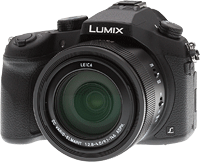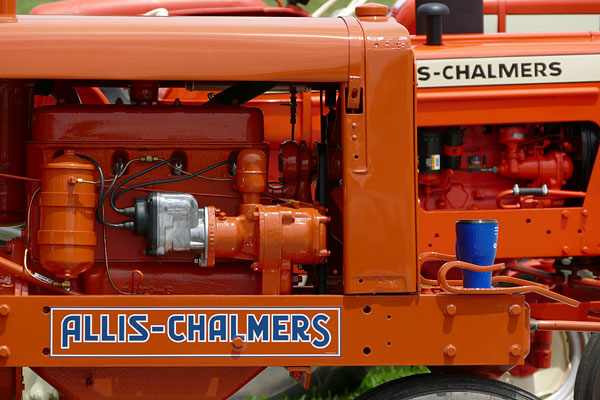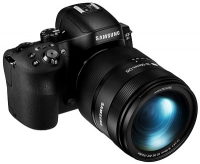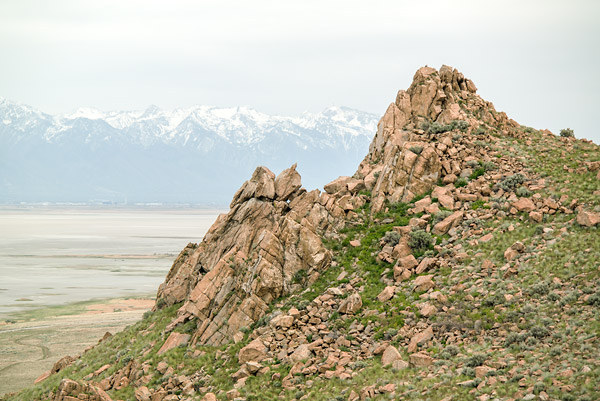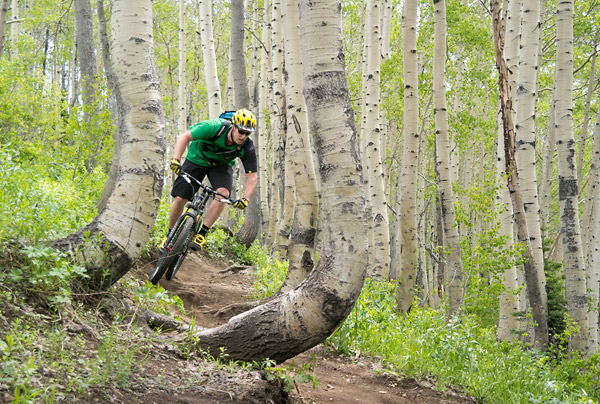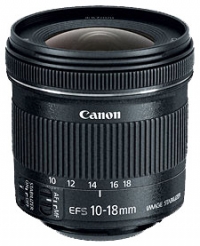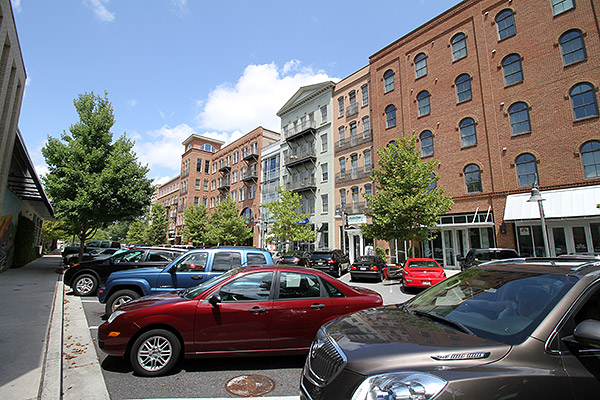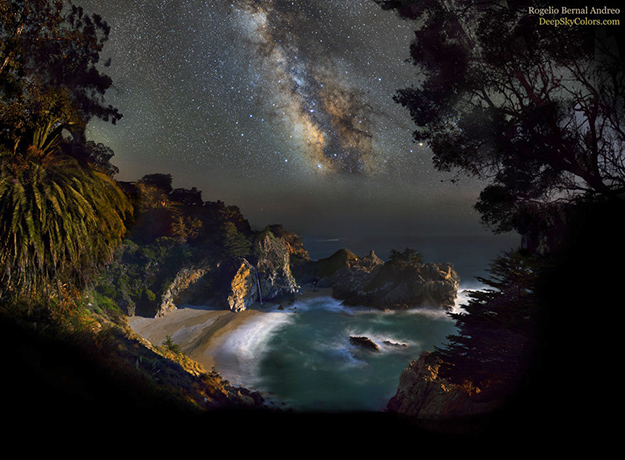=================================================================
To subscribe, unsubscribe or change your email address, visit:
http://www.imaging-resource.com/IRNEWS/index-subs.html
Support the Newsletter!
- Find the best price for anything at http://ir.pricegrabber.com
- Shop Amazon, Adorama and B&H at http://www.imaging-resource.com/buynow.htm
========================================================
THE IMAGING RESOURCE DIGITAL PHOTOGRAPHY NEWSLETTER
========================================================
Volume 16, Number 16 - 8 August 2014
----------------------------------------------------------------------------
Copyright 2014, The Imaging Resource. All rights reserved.
----------------------------------------------------------------------------
Welcome to the 332nd edition of The Imaging Resource Newsletter!
Welcome to your regularly scheduled Imaging Resource Newsletter for August 8th, and get ready to enjoy a another issue packed to the brim with reviews, shooter's reports, test shots, gallery images and more. Up first is the third and final Shooter's Report as well as our final conclusion on the powerful Nikon D4S. We also have a trio of Shooter's Reports from camera reviews currently in-progress: the Panasonic GH4 gets its second and final in-depth report, covering the video recording chops of this popular mirrorless camera; the other 4K Panasonic camera, the FZ1000, lands in the hands of reviewer Mike Tomkins for his first SR; and finally, the flagship Samsung NX30 gets its final SR treatment from John Shafer.
We also have a new lens review on the recently-released Canon EF-S 10-18mm f/4.5-5.6 IS STM, which at just $299 is a fantastic bargain as a high-quality wide angle zoom for Canon APS-C shooters.
In our Feature section, Dave Pardue -- a long-time fan of astrophotography -- sits down with notable astrophotographer and recurring NASA Astronomy Photo of the Day contributor, Rogelio Bernal Andreo, for a discussion on his techniques, his passion and, of course, the gear he uses to photograph the heavens.
In the Quick Hits section, there's another big selection of great content! From another Shooter's Report on the Nikon V3 and image quality analysis on the popular Sony RX100 III to a big selection of sample gallery images from the popular Nikon D810.
And finally, we share some of the most popular news stories from this past week, including first shots on the sub-$500 Samsung NX3000, an interesting take on the current digital camera market and how more and more models are filling the specialty "niche" roles, and a video from photographer Zack Arias talking about the age-old "crop vs full-frame" sensor debate.
Happy reading!
TOPICS
------------
- Get Social with IR
- Sponsors
- Reviews:
- Nikon D4S Review, excerpt
- Panasonic GH4 Shooter's Report Part II
- Panasonic FZ1000 Shooter's Report Part I
- Samsung NX30 Shooter's Report Part III
- Canon EF-S 10-18mm f/4.5-5.6 IS STM Lens Review
- Features:
- Astronomical beauty: How one photographer pulls heaven down to earth for the rest of us to see
- Quick Hits:
- Nikon V3 Shooter's Report Part II
- Sony RX100 III Image Quality Analysis
- Nikon D810 Sample Gallery Images
- New Product Announcements:
- Pentax Q-S1
- HD PENTAX-DA645 28-45mmF4.5ED AW SR
- Popular News:
- Next Issue
- Signoff
GET SOCIAL WITH IR
----------------------------------
If you want to stay up-to-date with the latest camera and photography news, get notified when IR posts its latest camera or lens review, and much more, get social with us on your favorite networking sites by:
By doing so, you'll also be supporting our efforts to deliver the best camera and photography content on the planet. (Google in particular appears to pay lots of attention to Google+ in deciding site/page relevance for its search results, so "circling" us there and +1-ing our site and pages would be an especially big help.) Thanks! We appreciate it!
SPONSORS
-----------------
This issue is sponsored in part by the following companies. Please show your appreciation by visiting the links below. (Visiting our sponsor's links really helps support this newsletter; sponsors pay attention to where the clicks come from. Thanks in advance for your clicks!) And now a word from our sponsors:"

* Sigma *
---------
Sigma's approach to photographic equipment is based on quality, craftsmanship, value, customization and
responsibility to photographers and the environment. All encompassed in our breakthrough, award winning
Global Vision lenses:
18-35mm F1.8 DC HSM
35mm F1.4 DG HSM
17-70mm F2.8-4 DC Macro OS HSM
120-300mm F2.8 DG OS HSM
USB Dock
All designed to deliver the highest optical quality and performance.
-----------------------------------------------------------------------------------------------------
Are you in the digital photo business? This newsletter is read by more than 47,000 direct subscribers (plus additional pass-along readers), all with a passion for digital photography. For information on how you can reach them, contact us at nleditor@imaging-resource.com
-----------------------------------------------------------------------------------------------------
Camera Review: Nikon D4S Review, excerpt
Nikon D4S Shooter's Report Part III: Shooting in the dark
by Eamon Hickey
For one of my last shoots with the Nikon D4S, I decided to do a little quasi-documentary photography around Greenwich Village. I specifically chose to shoot from late afternoon into the evening in order to put the camera's amazing high ISO capabilities to the test.
I began in Hudson River Park, where I found a nice flowerbed -- but it was in the shade and there was a brisk wind. It was 7pm, so still fairly light, yet this was a situation that called for a fairly high sensitivity. I needed to set a narrow f-stop of f/8.0 for adequate depth-of-field, and a high shutter speed of 1/320 second to freeze the wind-blown flowers.
|
Shaded flowers on a windy late afternoon. Hudson River Park. |
50mm, f/8.0, 1/320s, ISO 1250 |
To make that possible, I had to turn the Nikon D4S' sensitivity up to ISO 1250 equivalent. Shown above, the resulting image is almost completely free of noise. It has the smooth tonality and rich color saturation that you'd have expected at ISO 100 or 200 when shooting with cameras from just a few years ago.
I stayed in the park until dusk, then wandered over to the path set aside for joggers and bicycles. By now, the light was down to about EV 7 (ISO 100), meaning I had to use ISO 6400 to get an action-stopping shutter speed of 1/500 second at an aperture setting of f/4.0. The autofocus system of the Nikon D4S had no trouble follow-focusing bicyclists and rollerbladers in the dim light. At this higher sensitivity, noise is definitely visible in the images, but they still retain an impressive amount of detail and color.
|
I needed to use a shutter speed of 1/500 second to freeze this rollerblader at dusk. Hudson River Park. |
50mm, f/4.0, 1/500s, ISO 6400 |
As dusk turned to night, I left the park and began wandering through Greenwich Village. I had the Nikon D4S set to Auto ISO as I made a series of images of folks on the street, and sitting in and around restaurants. The D4S' sensitivity climbed from ISO 14,400 equivalent all the way up to an amazing ISO 229,880.
In very late dusk at Washington Square Park, I got a picture that I liked of some musicians and a dancer, which I shot at 1/125, f/4.0, and ISO 28,735. There is definitely noise in the image when viewed at 100%, but it retains fairly good color and at smaller magnifications, it looks pretty clean.
|
Playing for tips at twilight in Washington Square Park. |
50mm, f/4.0, 1/125s, ISO 28,735 |
Near the park, I passed the entrance to a bar where a woman was sitting essentially in the dark, evidently reading an amusing text message. (I can't be the only street photographer who's finding it harder and harder to get a picture of anything other than somebody staring hypnotically into their smartphone.)
Although I could have opened the lens wider or even reduced my shutter speed slightly, I decided to force the Nikon D4S to its whopping maximum ISO of 409,600. The shot is very noisy, of course, but at small sizes, as you see here, it's recognizable for what it is. And the autofocus system locked on virtually instantly in this near-dark situation (about EV 0 at ISO 100).
|
Texting in near dark, Greenwich Village. ISO 409,600! |
50mm, f/5.6, 1/125s, ISO 409,600 |
It's only a modest exaggeration to say that this camera can see in the dark!
Live View
As I noted in my previous Shooter's Reports, Nikon has made a handful of small enhancements to the live view functionality of the D4S, and I ran through them making throwaway test images in my living room. Overall, live view works fairly well for the things I would use it for -- landscapes and still lifes, for example. A range of options for how the LCD monitor displays your shooting settings make it easy to focus precisely using manual focus, and get the right exposure.
The autofocus of the Nikon D4S in live view mode works okay for stationary subjects when you're not in a hurry, although it can have trouble locking on to low contrast subjects. I briefly tested it for street shooting on a late afternoon walk in the East Village, and it was slow and indecisive. That said, I wouldn't normally use live view on a DSLR for that kind of shooting anyway, so this isn't a big deal to me.
|
Restaurant window in the East Village at ISO 10,000. |
50mm, f/2.8, 1/250s, ISO 10,000 |
Movies
To test the video capabilities of the Nikon D4S, I took it to Tompkins Square Park one evening. I wanted to experiment with the very shallow depth-of-field that the camera's full-frame sensor can deliver with the AF-S 50mm f/1.4 lens. I set up a shot where I could focus on some flowers in the foreground, and then shift the focus to people walking by in the background, and used a shutter speed of 1/125 for several clips at f-stops ranging from f/1.6 to f/2.8.
I found it easy to compose the shot on the LCD and check my exposure with a quick test clip. I had a little trouble focusing precisely using the Nikon D4S' LCD monitor at normal magnification, but solved this by increasing the live view magnification for critical focusing with just one button press. Although I kept my sensitivity at ISO 200 equivalent to get the best possible footage, Auto ISO is available for recording movies in manual exposure mode. This would undoubtedly be useful in some news and documentary shooting scenarios, where the light might be changing as you shoot.
Summing it up
If there's one fundamental concept that separates a professional camera from amateur and enthusiast models, it's this. A pro camera is designed with the idea that, no matter what, you can rely on it to get you the shot. It'll have the versatility and performance to go from a wedding one day to car racing the next, and it'll keep on shooting through storms, riots, and hard landings on dirt airfields.
I didn't wade into any riots with the Nikon D4S, so I can only make educated guesses about its durability from its rock-solid construction. Its versatility and performance, though, are unmatched by any other camera I've ever used.
Of course, the D4S is a lot more camera than most of us need, including me. (Personally, I find it too expensive and bulky.) Still, I found it really pleasurable and satisfying to use such a responsive and well-made precision tool. That might be reason enough to get one -- even if you're not being paid to go into any possible situation and come back out with award-winning shots.
Imaging Resource Conclusion
So what did we think? Our\A0Nikon D4S review is complete and\A0tells the whole story. Given its heritage and flagship status, it was clear coming into our Nikon D4S review that the question we'd be looking to answer wasn't so much whether this was a great camera, as how great it might be. From our time with the earlier Nikon D4 -- and our experience of Nikon's professional cameras to date -- we were fully expecting to enjoy shooting with the D4S, and we certainly did. If you've not already done so, we'd suggest starting off with a read of our detailed\A0Shooter's Reports, before you get our final verdict in our\A0Nikon D4S conclusion.
---
Camera Review: Panasonic GH4 Shooter's Report Part II
All about video: 4K, 1080p, Slo-Mo, the works!
by\A0William Brawley
In addition to being a solid still photography camera, the Panasonic GH4\A0is a camera with a dual purpose: a professional-level video camera. In the\A0second installment\A0of my\A0Panasonic GH4 Shooter's Report\A0I delve deeper into the features and performance of the GH4's video recording capabilities.\A0Whether you're a still photographer who's just dipping your toes into the ocean that is video production or you're a hardcore, seasoned professional videographer
, the Panasonic GH4 is like the "Swiss Army knife" of video -- boatloads of file formats, bitrates, framerates, clean HDMI output, headphone jack, full-time AF\85 you name it, the GH4 probably has it.
We gave the Panasonic GH3 heavy praise for its impressive video quality and pro-level featureset -- and doing so at a very "un-pro-like" price point -- and the new GH4 has upped the ante with not only 4K video recording, but also with even higher quality 1080p video bitrates, and a number of other high-end video features.
And still, the GH4 maintains a relatively low price for a pro-level camera at around $1,700, which is impressive considering it's: A) Panasonic's flagship photo-oriented interchangeable lens camera (the AF100 being a professional Micro Four Thirds camcorder) and B) a camera with video features and image quality that meet or surpass professional cinema cameras that can cost upwards of tens of thousands of dollars.
While I don't consider myself a professional videographer, I've had a fair share of experience in video production, and after spending some quality time with Panasonic's new top-of-the-line Micro Four Thirds camera, I'm ready to discuss my thoughts on the video recording features of the GH4, as well as wrap-up my GH4 Shooter's Report with my final summary of Panasonic's new flagship mirrorless camera.
So, head on over to our soon-to-be-complete\A0Panasonic GH4 review\A0for a full overview or jump straight over to my\A0Panasonic GH4 Shooter's Report Part II\A0for all the nitty-gritty details on video recording as well as my shooter's report summary of this powerful camera.
[Quick Links:\A0Panasonic GH4\A0\95\A0Shooter's Reports:\A0Part I,\A0Part II\A0\95\A0Test Shots\A0\95\A0Sample Gallery]
---
Camera Review: Panasonic FZ1000 Shooter\92s Report Part I
The Sony RX10 rival heads out of the lab, into the real world!
by\A0Mike Tomkins
Although I love cameras in all their shapes and sizes, it's not just any digicam that can have me sitting on the edge of my seat in anticipation of its arrival. The\A0Panasonic FZ1000\A0-- for which I've just posted my\A0first Shooter's Report\A0-- is just such a camera. When it cleared our lab testing and shipped out to me for review, I found myself checking its tracking number regularly, hoping against hope to see the magic words "Out for delivery".
Since I reviewed the Sony RX10 last year, it made perfect sense that I would do the same for its first clear rival. The FZ1000 is about as direct a competitor to the RX10 as one could ask for, and both cameras answer my personal desire for generous zoom reach without sacrificing too much on portability and image quality. Once the Panasonic FZ1000 showed up, I wasted no time in clearing my desk, finding an attractive shooting opportunity, and getting out for some one-on-one time with the latest member of the high-end bridge club.
When I first laid hands on the RX10 last year, I was amazed how quickly I fell in love with it. Can the Panasonic FZ1000 sway me in my affections? Read the first part of my\A0Panasonic FZ1000 Shooter's Report\A0now, and find out! (And if you've not already done so, be sure and take a look at the\A0Panasonic FZ1000 gallery photos\A0I shot -- as well as those taken by my colleagues,\A0Labmaster Luke Smith and senior lens technician Rob Murray, both of whom were also keen to get their hands on this long-zoom, large-sensored beauty!)
---
Camera Review: Samsung NX30 Shooter\92s Report Part III
Final user thoughts on this high quality camera
Article by\A0William Brawley | Review by John Shafer
We've just published the\A0third installment\A0of our\A0Samsung NX30 Shooter's Report. Our reviewer, John Shafer has spent over a month getting to know the Samsung NX30, and while it has a few quirks, overall John's walked away with a positive take on Samsung's latest flagship mirrorless camera
In his own words: "I took nearly 3500 pictures with it, and I pushed it hard -- probably harder than most people ever will. It's a solid all-purpose enthusiast camera with great features, a travel-friendly body, and for the most part, the performance is great. Overall, I was very pleased with what I was able to do with it. I shot high-speed action, landscapes, food porn, people photos, low light photos, and video; and the NX30 handled most everything very well."
|
NX30 + 50-200mm f/4-5.6 ED OIS Lens: 113mm, f/5.6, 1/250s, ISO 200, +1EV.
(Note: This image has been re-touched and edited.\A0\A92014 John Shafer - all rights reserved) |
In this installment, John gives a nice overview of his time with the\A0NX30, as well as investigates a strange lockup problem he experienced with the camera and certain memory cards. He also gives his final assessment on image quality plus does some video shooting with it, as well as compares how the NX30 stacks up against competing cameras.\A0
Head on over to John's\A0Samsung NX30 Shooter's Report Part III, and read all about the performance, image quality and the few quirks of Samsung's latest high-end mirrorless camera.
|
NX30 + 18-55mm Kit Lens: 37mm, f/4.5, 1/800s, ISO 800.
(Note: This image has been re-touched and edited.\A0\A92014 John Shafer - all rights reserved) |
|
NX30 + 18-55mm Kit Lens: 40mm, f/11, 1/125s, ISO 100, +1EV.
(Note: This image has been re-touched and edited. \A92014 John Shafer - all rights reserved) |
[Quick links:\A0Samsung NX30\A0\95\A0Shooter's Reports:\A0Part I,\A0II,\A0III\A0\95\A0Lab Shots\A0\95\A0Sample Gallery]
---
Lens Review: Canon EF-S 10-18mm f/4.5-5.6 IS STM
The best bang-for-your-buck ultra-wide APS-C lens?
by\A0William Brawley
Are you a Canon photographer with an APS-C camera and need an ultra wide-angle zoom? Do you want the best value for your money? Look no further than Canon's new $299\A0EF-S 10-18mm f/4.5-5.6 IS STM lens. Announced\A0back in May, the new Canon EF-S 10-18mm f/4.5-5.6 IS STM ultra wide-angle zoom lens is small, lightweight, very affordable, and as it turns out, quite the solid performer.
Canon already released an APS-C ultra wide-angle zoom lens -- the EF-S 10-22mm f/3.5\964.5 USM -- back in 2004, and earned a lot of praise for its image quality. However, it's significantly larger, heavier and pricier than this new 10-18mm lens, albeit a little faster with the \83/3.5-4.5 aperture range. As a compromise for the slower apertures, the Canon 10-18 features a IS system -- rated up to 4-stops at 18mm -- and combined with Canon's STM focusing, this new lens should make it a hit with those looking for a small, fast-focusing lens as well as with HD-DSLR video shooters.
The 10-18mm, however, it not meant as a replacement to the 10-22mm. The small, lightweight build is constructed most from solid-feeling polycarbonate plastic and is designed primarily as good match with Canon's smaller, more entry-level DSLRs like the\A0Rebel T5i\A0or\A0SL1.\A0And based on our test results, the new budget-friendly Canon 10-18mm lens is going to give the older 10-22mm lens a run for its money!
Head on over to SLRgear to read the full\A0Canon EF-S 10-18mm f/4.5-5.6 IS STM review, complete with our in-depth report, final conclusion as well as our full range of test results and sample images.
The Canon EF-S 10-18mm f/4.5-5.6 IS STM is currently available for purchase at the low price of $299 (ships with front and rear caps; a lens hood and soft carry bag can be purchased separately), and can be purchased at one of our trusted affiliates:\A0Amazon,\A0Adorama\A0and\A0B&H. Purchasing this lens, or any other item, at one of these retailers helps support this site and keeps the reviews coming!
In the meantime, check out some sample photos shot by our senior lens technician Rob Murray using the Canon 7D. You can view more sample photos, plus download the full-resolution files, over at\A0our Flickr page.
|
Canon 7D: 12mm, f/5.6, 1/500s, ISO 100 |
|
Canon 7D: 10mm, f/9, 1/125s, ISO 100 |
|
Canon 7D: 18mm, f/5.6, 1/125s, ISO 100 |
-----------------------------------------------------------------------------------------------------
FEATURE
Astronomical beauty: How one photographer pulls heaven down to earth for the rest of us to see [EXCERPT]
by\A0Dave Pardue
I've loved both astronomy and photography since I was a kid, so seeing awesome photographs of objects from the heavens has always fascinated me. As such, it's been only natural that the first thing I've done for the past ten years over coffee every morning is to check out NASA's\A0Astronomy Photo of the Day\A0page to see what's new out there in the cosmos.
Every now and then I come across an especially interesting or inspiring entry, and this recent one on June 29, 2014 called\A0Galaxy Cove Vista Revisited\A0by\A0Rogelio Bernal Andreo\A0certainly fits that description.
|
Galaxy Cove Revisited by Rogelio Bernal Andreo
[NASA Astronomy Picture of the Day \95 June 29, 2014] |
I was so intrigued with this image that I contacted Rogelio to see if he'd share more about his work and techniques with our readers, and he graciously agreed. Below is a brief interview with him regarding his work in astrophotography over the past seven years. I hope you all find it as interesting as I did! Please feel free to share your comments, compliments and questions about Rogelio's work in the comments section below this article.
Imaging Resource interview with Rogelio Bernal Andreo
IR: When did you decide to start shooting deep sky imagery and what was your\A0initial inspiration?
RBA: On September 2007 I was driving the Pacific Coast Highway south of Big Sur in California with the family, when my wife opened the moonroof of the car, looked up and screamed "You have to pull over, you have to see this!" referring to the starry sky that was above us, me unaware, due to being "blinded" by the car lights. I pulled over, and there I was, well into my 30's, staring at the Milky Way for the first time in my life. I had my camera and tripod so I tried to capture that mesmerizing view, but it was a complete disaster. I didn't mind, and we spent a couple of hours at that turnout watching a night sky as I had never seen before. I'd gotten intrigued about how people take pictures of galaxies and nebulas, so the next day I went onto the Internet, and hundreds... thousands of hours spent on this discipline did the rest.
IR: In the\A0Wikipedia page\A0describing your professional background, it discusses\A0your early use of post-processing techniques not common at the time you\A0began exploring them. Can you give our readers some background on your\A0technique, and how it's evolved over time?
RBA: The Wikipedia article refers to multi-scale techniques, which in short, generally means breaking the image into different scales, apply processes to large and small scale structures separately, and then recombine them. I am not the first person using these techniques, and in fact, some commercial applications use multi-scale techniques internally, but it's possible that I might have helped making these techniques popular in the astroimaging community.
|
Witch Head Nebula and Rigel
[NASA Astronomy Picture of the Day \95 December 29, 2009 and November 1st, 2012] |
Head on over to Imaging Resource to read the rest of Dave's interview with Rogelio Bernal Andreo and see more examples of his fantastic astrophotography!
(All images copyright \A9 Rogelio Bernal Andreo / DeepSkyColors.com)
-----------------------------------------------------------------------------------------------------
QUICK HITS
 |
1/400 sec. @ ISO 1600, 108mm equiv., f/5.0 |
 |
1/500 sec. @ ISO 560, 167mm equiv., f/8.0 |
 |
1/500 sec. @ ISO 180, 92mm equiv., f/3.8 |
---
---
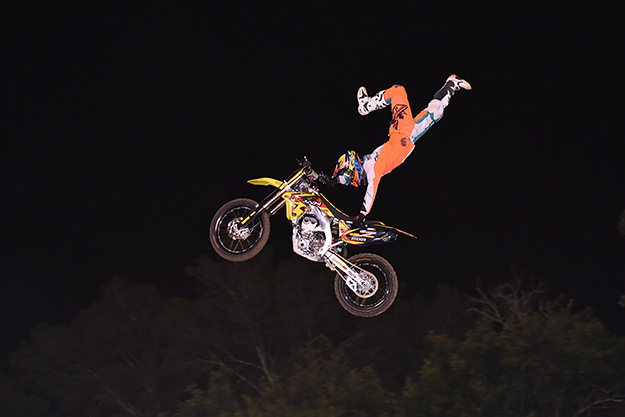 |
1/250s / f/2.8 / 100mm / ISO 3600 (Nikon 70-20mm f/2.8 ED VR II)
(slightly cropped from original) |
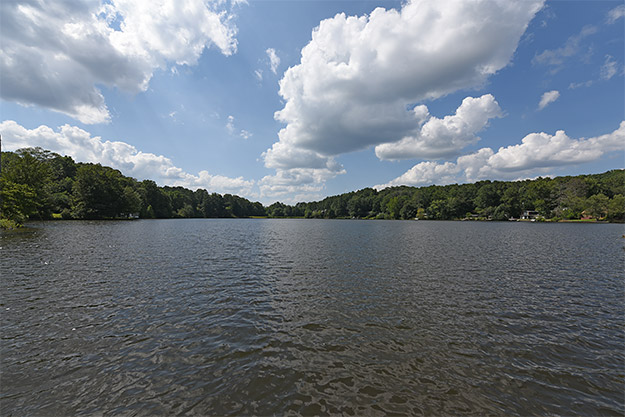 |
1/640s / f/5.6 / 14mm / ISO 64 (Nikon 14-24mm f/2.8 ED)
(slightly enhanced for shadow/highlight) |
 |
1/200s / f/2.8 / 85mm / ISO 320 (Nikon 85mm f/1.8 G) |
-----------------------------------------------------------------------------------------------------
NEW PRODUCT ANNOUNCEMENTS
Pentax Q-S1 takes the Q-series back to basics with a brand-new body
by\A0Mike Tomkins
Back in 2011, Pentax launched its first compact system camera, the tiny little Pentax Q. Now Ricoh -- current owner of the Pentax brand --\A0takes the Q-series back to those roots with the\A0Pentax Q-S1, a camera which returns to a body more reminiscent of the original Q, but with the advantages of later models incorporated into the design.
In true Pentax fashion, the original Q was extremely small, yet had surprisingly good handling. Unfortunately, to achieve its extremely small body size, Pentax opted for an equally-tiny 1/2.3-inch type sensor that led many to dismiss it out of hand. Last year, a larger 1/1.7-inch type sensor came to the Q-series in the Pentax Q7, but it lacked the solid magnesium-alloy body of the original Q. Now, Pentax takes the Q-series back to its roots with the Pentax Q-S1, a camera which pairs the larger sensor size of the Q7 with a body more reminiscent of the original Q.
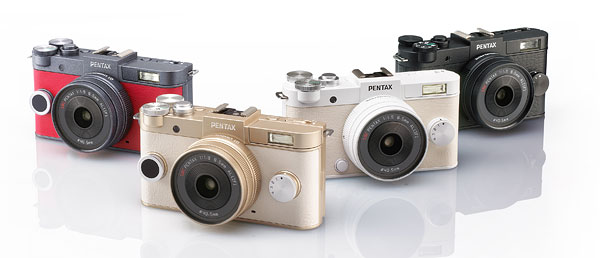 |
Like its forebears, the Pentax Q-S1 is still a camera of extremes, aimed at those photographers for whom minimizing system size is the primary goal. If that describes you, however, the Q-S1 looks to be the most exciting Q-series camera to date -- on paper, at least! Its brand-new body now has smoother, cleaner lines than did any of its predecessors, and while we don't yet know whether it's polycarbonate or metallic, we do know that it now sports an aluminum quick dial and grip, which gives us cause for hope.
The Pentax Q-S1 will be available in a wide range of body colors, as are many of Pentax's cameras. There will be four standard color combinations (Black, Pure White / Cream, Gunmetal / Carmine Red, and Champagne Gold / Cream), and it will be possible to custom-order your own color combination from a further 36 possible choices, as well.
Available from August 2014, the Pentax Q-S1 will list for around US$500 in a kit with the Pentax-02 Standard Zoom kit lens. (On the Q-S1, this 5-15mm f/2.8-4.5 optic is equivalent to a 23-69mm wide zoom, after accounting for the focal length crop.) There are body-only or twin-lens (02 Standard Zoom and 06 Tele Zoom) kits available as well.
Find out lots more about the latest Q-series compact system camera in our\A0Pentax Q-S1 preview!
---
Ricoh officially announces weather-sealed, ultra-wide zoom for Pentax medium-format cameras
by\A0Mike Tomkins
Back when we published our\A0Pentax 645Z preview\A0earlier this year, we mentioned that Ricoh -- the company behind the Pentax brand -- had\A0three more zoom lenses still on the roadmap on top of the\A017 lenses (12 primes and five zooms) that were already available. Well, we now know the identity of one of those three lenses, courtesy of an announcement from the company today.
The ultra-wide angle zoom lens on the roadmap is now identified as the HD PENTAX-DA645 28-45mmF4.5ED AW SR, a weather-sealed optic with a 1.6x zoom ratio, and a focal length range equivalent to a 22 to 35.5mm lens on a 35mm camera. The new lens includes eleven dust- and water-resistant seals throughout, and a complex 17-element, 12-group optical formula. Of these, two elements are high-performance aspherics, and two are extra-low dispersion elements.
Also included are Pentax's in-lens Shake Reduction system -- said to be good for 3.5 stops of correction -- as well as its Aero Bright and HD lens coatings. Priced at around US$5,000, the\A0HD PENTAX-DA645 28-45mmF4.5ED AW SR lens goes on sale from August 2014.
-----------------------------------------------------------------------------------------------------
POPULAR NEWS ON THE SITE
At http://www.imaging-resource.com/news you can keep track of the photo news on our main site. Among the most popular stories over the last couple of weeks:
- Premium, Specialty, Niche: Welcome to the New World Order
- Samsung NX3000 First Shots posted: Time to see just how well this sub-$500 APS-C camera stacks up
- Let\92s cut the crop: Zack Arias on the full-frame vs crop sensor debate
- Adobe ships Lightroom 5.6, Camera Raw 8.6 Nikon D810, Panasonic GH4 and FZ1000 support
- The Panasonic FZ1000 CAN output clean HDMI video
- Photography might help cope with mental illness, according to experts
- Finally some good news: Sony and Fujifilm report rising revenue from camera sales
- Learn how to create stunning astrophotography even in light-polluted areas
- This DIY underwater camera drone went to Botswana to film hippos in the Okavango Delta
- Rainbow of Terror: how a government program to track suspicious activities snared an unsuspecting photographer
NEXT ISSUE
-------------------
We'll see you next on August 22th, with a regularly scheduled edition (and lots more news and analysis to share)!
SIGNOFF
--------------
That's it for now, but between issues visit our site for the latest news, reviews, or to have your questions answered in our free discussion forum. Here are the links to our most popular pages:
Newsletter Archive: http://www.imaging-resource.com/cgi-bin/dada-nltr/mail.cgi/archive/irnews
Daily News: http://www.imaging-resource.com/news
SLR Gear: http://www.slrgear.com
New on Site: http://www.imaging-resource.com/new-on-ir
Review Index: http://www.imaging-resource.com/camera-reviews
IR Photo Contest: http://www.dailydigitalphoto.com
Google + http://plus.google.com/+imagingresource
Facebook: http://www.facebook.com/imagingresource
Twitter: http://www.twitter.com/IR_Lab
Happy snapping!
Dave Etchells & the IR Editorial Team
nleditor@imaging-resource.com
(Please use this email address for any questions or other correspondence; it's the only one we're checking these days for Newsletter-related reader emails.)
|



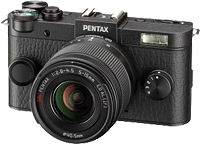

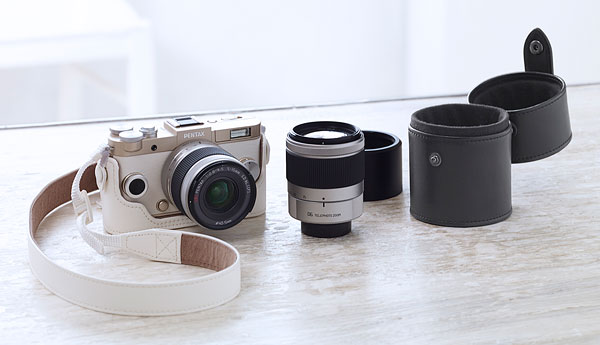
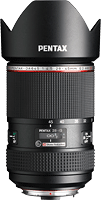
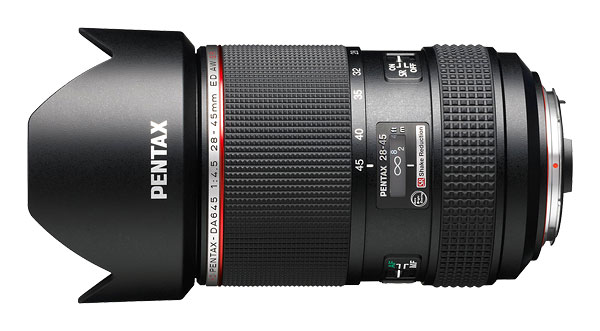
![]()












